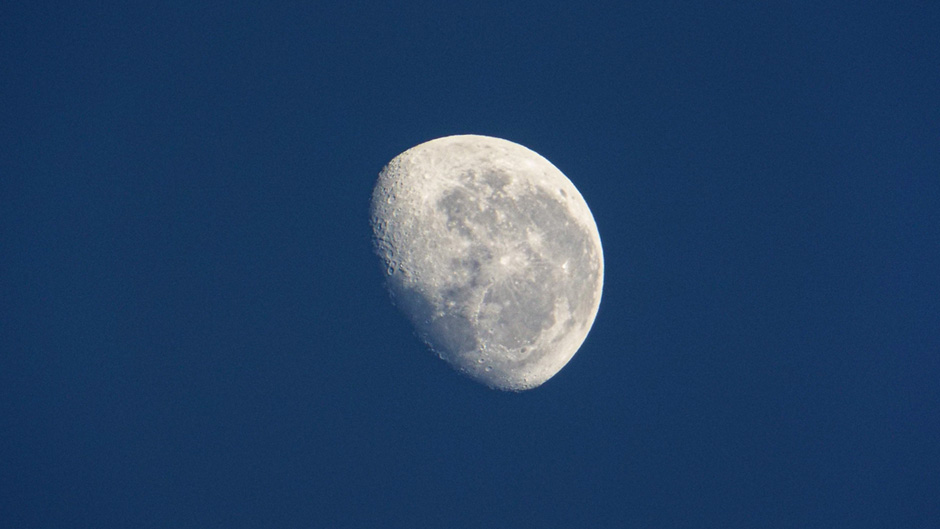Earth’s newest celestial neighbor has finally arrived.
Astronomers using a powerful telescope in Sutherland, South Africa, first detected the 33-foot-long asteroid in August, reporting their discovery in Research Notes of the American Astronomical Society.
There are bigger space rocks, to be sure. But what makes 2024 PT5 so fascinating is that it now orbits Earth as a “mini moon” caught in our planet’s gravitational pull.
Earth’s second moon, however, won’t be sticking around for long. It is following a horseshoe path around our world before returning to a heliocentric orbit (an orbit around the sun) in late November.
Such near-Earth objects “offer a glimpse into the processes that formed our solar system,” said Nico Cappelluti, an associate professor of astrophysics in the University of Miami College of Arts and Sciences. “Most of the asteroids in our solar system are rocky remnants left over from the formation of our solar system.”
Asteroid 2024 PT5 is part of Arjuna, an asteroid belt consisting of space rocks that follow orbits around the sun very similar to that of Earth. “And for that reason, sometimes they remain briefly trapped in our gravitational field,” Cappelluti said. “Having them so close is a captivating opportunity.”
While the school bus-sized asteroid is too dim and too small to be seen with the naked eye or with amateur telescopes, its two-month sojourn around Earth is helping to maintain our keen interest in space rocks. NASA has sent several robotic spacecraft to explore asteroids. Two years ago, in what was called the first test of a planetary defense system, NASA even crashed a spacecraft into a giant space rock, Dimorphos, proving that it is possible to redirect an asteroid should one ever be on a collision course with Earth.
Private companies also want to send spacecraft to asteroids, hoping to mine the celestial objects for the precious metals they contain.
“Asteroids are classified based on their orbit and also based on their content,” said Bertrand Dano, an assistant professor of practice in the College of Engineering’s Department of Mechanical and Aerospace Engineering. “Some are just made of stone, while others have high concentrations of rare metals—platinum and gold for electronics, nickel and cobalt for catalyst and fuel-cell technology, and, of course, iron.”
Asteroid mining is not a far-flung idea, Dano believes. “There are currently millions of asteroids in our solar system, and about 2 million of them are larger than 1 kilometer. The resources contained inside them is the new dream of El Dorado, and there is currently a handful of companies banking on it,” he said, noting that recent missions to rendezvous with and to orbit and land on asteroids have demonstrated that space mining could be just a matter of time.
But pursuing asteroid mining will require a massive investment—from the mining equipment, which would need to run in a vacuum, to the technology needed to transport extracted minerals to Earth, Dano pointed out.
And then, there is the spacecraft itself. A ship dedicated to traveling to an asteroid for the purpose of extracting minerals from it would likely be a robotic craft. “A trip to Mars takes approximately eight months in the best conditions. The space and equipment required to sustain life is better used for spare equipment and resource storage,” Dano explained. “Leaving Earth’s gravity requires a lot of energy, so mining missions would be better launched from space or from low gravity bodies such as the moon, Mars, or Titan, one of Saturn’s natural satellites.
“Returning to Earth is relatively easy,” he continued, “but it is hazardous for the materials. It would be unfortunate to see the whole prize go up in smoke. Refining could be done in space and periodically ship the refined product. To my knowledge, nobody is thinking that far.”
Still, asteroid mining has the potential payback of a hundredfold or more, according to Dano. “Mining and returning platinum or gold from asteroids could make a person a trillionaire overnight, with the potential to flip our entire economy, trade, and market,” he said. “As astrophysicist Neil deGrasse Tyson once said, ‘The first trillionaire there will ever be is the person who exploits the natural resources on asteroids.’”

